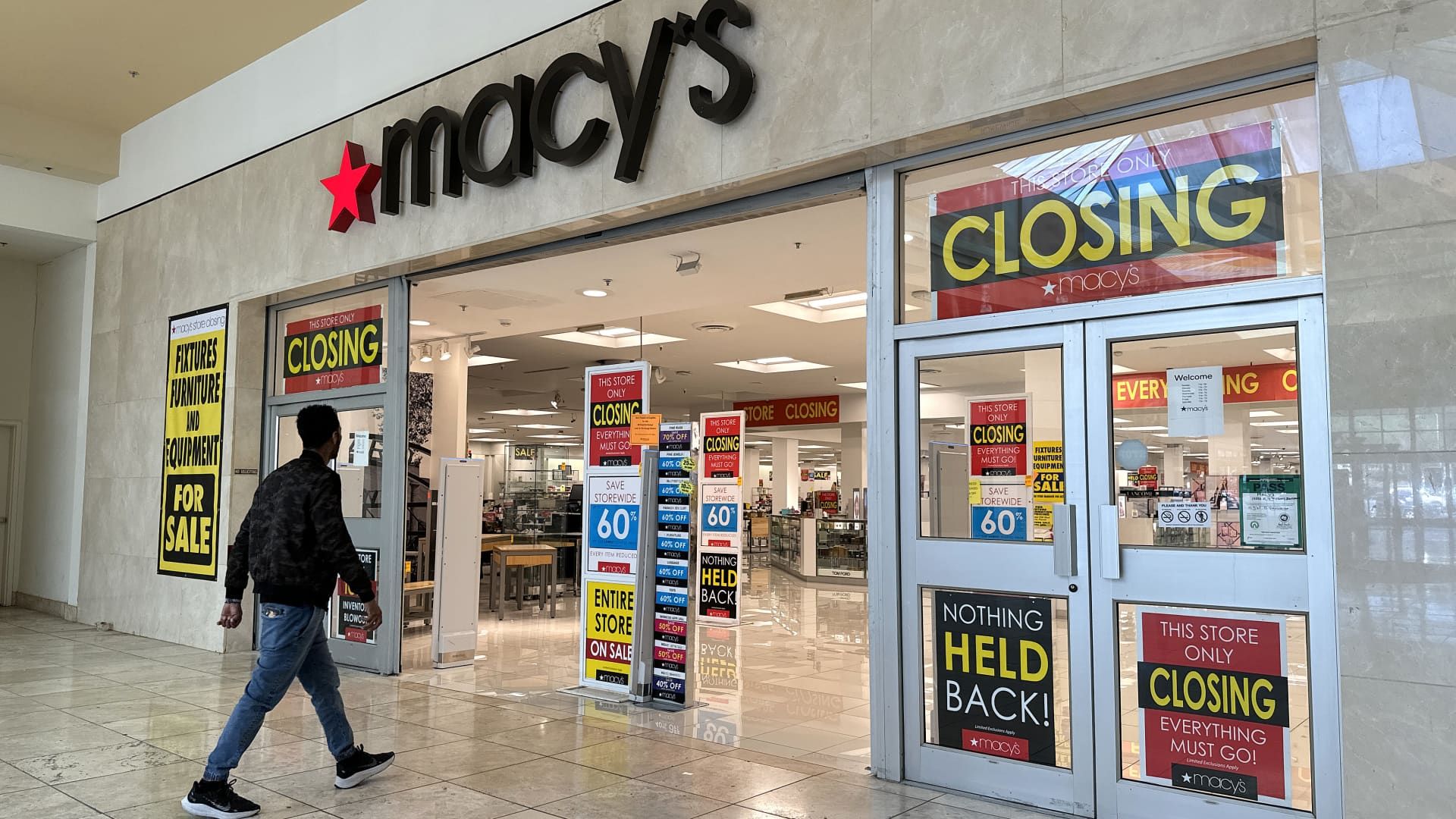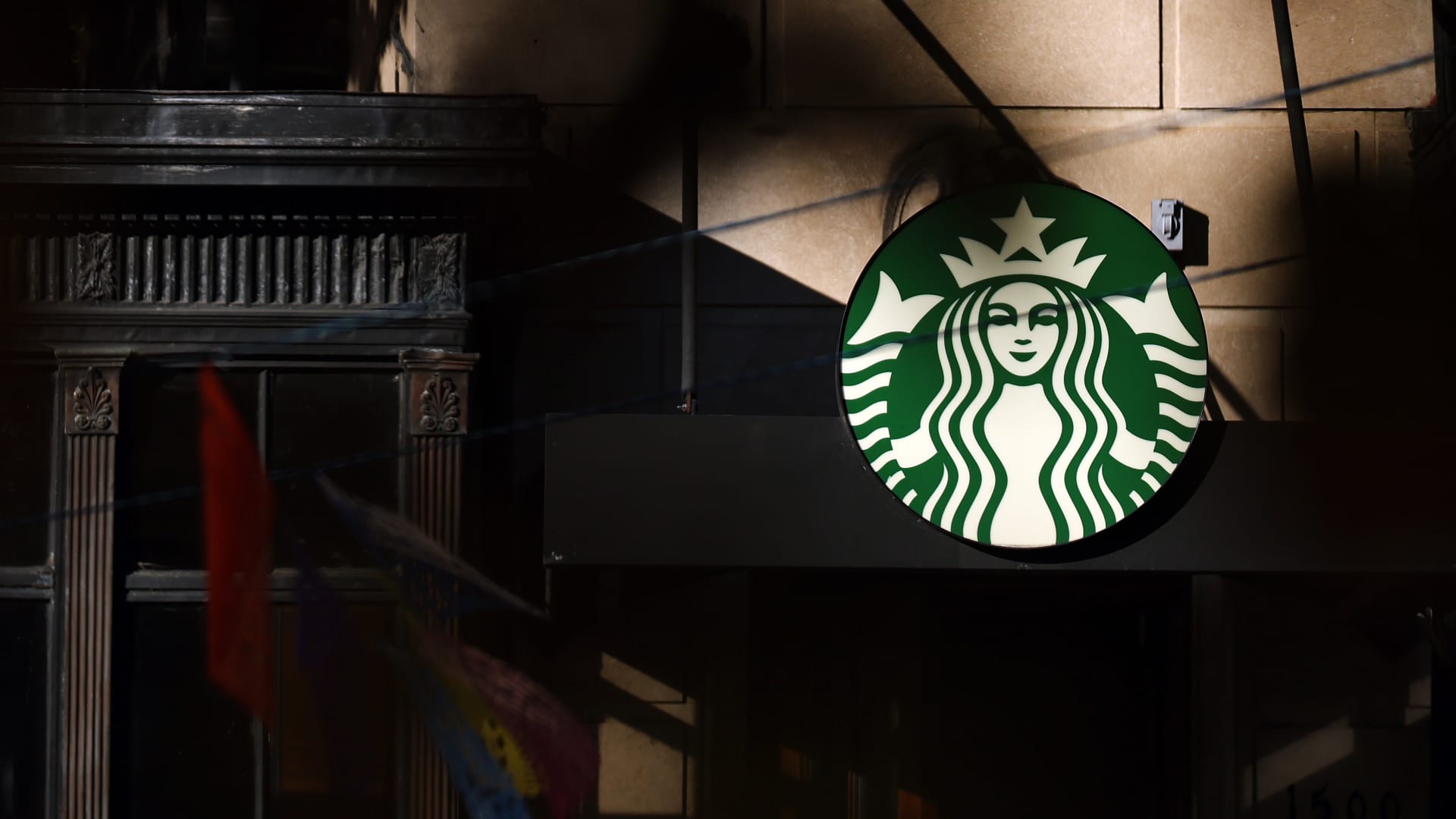A customer enters a closing Macy's store at Bay Fair Mall on February 27, 2024 in San Leandro, California.
Justin Sullivan | Getty Images
Macy's The decision to close nearly a third of its stores will bring changes to shopping centers and communities across the United States.
Some of these transformations may surprise buyers.
The retailer said in late February that it plans to close about 150 of its namesake locations by early 2027. Macy's has not yet shared which stores it will shutter. When CEO Tony Spring announced the move, he said the stores Macy's will close represent 25% of the company's gross floor space but less than 10% of its sales.
The company plans to invest further in the roughly 350 namesake stores that will remain and open new locations for its best-performing brands: high-end department store Bloomingdale's and beauty chain Bluemercury.
But the closures will be the latest catalyst putting pressure on malls to evolve with changing consumer tastes. Macy's is closing stores because the growth of online shopping and changing demographics mean some small towns or regions can no longer support a busy mall.
The Macy's closures will ultimately be a good thing for many malls and customers, said Chris Wimmer, a senior director at Fitch Ratings, which tracks real estate investment trusts. The department store's exit will hasten the inevitable demise of “low-quality malls that really don't need to exist anymore.” The closures will give mall owners healthier An opportunity to give new life and relevance to a shopping center.
In those malls, which tend to have better locations and landlords with stronger balance sheets, he said landlords are “eager to get their hands on their Macy's” and free up prime real estate.
Macy's owns most of the stores that bear its name. This dates back to when mall owners gave department stores space to attract shoppers and make money by charging rent to other retailers.
The Macy's closures will also make way for real estate developments that can better adapt to the changing demographics or economies of their surroundings, whether through the construction of a medical building, a retirement community or a grocery store.
But he acknowledged that some of the closed Macy's stores may be tougher to sell, and their exit could be the nail in the coffin for a mall that is becoming an eyesore.
“If it's in a really bad location where no one wants to spend money to tear it down, then it could rot away,” he said.
Shoppers walk through the Fashion Center at Pentagon City, a shopping mall in Arlington, Virginia, on February 2, 2024.
Saul Loeb | AFP | Getty Images
Downsizing of department stores
Macy's is cutting back on its locations as both department stores and malls shrink.
Macy's has already exited many malls. It has closed more than a third of its name-brand stores over the past 10 years. As of early May, the company had 503 Macy's stores, including a small number of other concepts outside malls.
Other anchor stores have downsized or disappeared from malls, including Sear's, Lord & Taylor and JCPenney.
The number of shopping malls has also been reduced. Real estate companies often divide shopping malls into class A and B, which have higher occupancy rates and lower sales density, and class C and D, which have lower occupancy rates and higher sales density.
According to reports from companies, S&P Capital IQ and Coresight Research, at the end of 2016 there were 352 shopping centers classified as Class A and B. By the end of 2022, that number had dropped to 316 shopping centers.
That decline is most pronounced among Class C and D malls, which fell from 684 malls in 2016 to 287 in 2022, according to the companies' research.
America's weak shopping malls have gotten weaker, and its strong shopping malls have gotten weaker. “Top-tier malls are places where every retailer and consumer wants to be,” said Anand Kumar, associate director of research at Coresight. He expects that trend to continue. By 2030, he said, top-tier malls will attract a larger share of total mall spending and more lower-tier malls will close or be forced to convert more space to nonretail uses.
In some ailing malls, Macy's may be the last anchor left.
Kumar said the U.S. doesn't need as many malls, as customers shop more on retailers' websites. He added that many of the fastest-growing retailers in terms of store count, such as General dollar, Five below zero and TJ MaxxThey want to be in suburban centers rather than shopping malls.
He said adding more diverse tenants to malls, such as medical buildings, co-working spaces, nail salons and restaurants, can be a smarter move for mall owners to increase traffic.
That's what many mall owners have done and could do with vacant former Macy's locations.
Even if a mall wanted to fill a Macy's space with a retailer, there are few individual tenants that could take up the entire space, said Naveen Jaggi, president of retail advisory services at JLL. Those that could, such as Nordstrom and Belk, typically aren't opening huge stores like they have in the past, he said.
Macy's stores typically range from 200,000 to 225,000 square feet.
Stonestown Galleria is an example of how a shopping center can change after the closure of Macy's. The mall, located in the San Francisco area, features a Whole Foods, a movie theater, a sporting goods store and a health club in the location where the department store once stood.
Courtesy: Brookfield Properties
Grocery stores, hockey rinks and Amazon warehouses
If history is any guide, former Macy's stores will likely be transformed into spaces and give rise to projects that will surprise regular mall-goers. Closings of anchor malls have cleared the way for new apartment complexes and entertainment wings with restaurants, amusement parks or activities such as laser tag and rock climbing.
Since 2012, major shopping center owner Brookfield Properties has redeveloped more than 100 anchor boxes with capital investments of more than $2 billion.
One of the malls that was repurposed after Macy's closed is Stonestown Galleria. In the San Francisco mall, a former Macy's is now a Whole Foods, a movie theater, a sporting goods store and a health care center.
At Tysons Galleria in the Washington, D.C., area, Brookfield used the closing of Macy’s as an opportunity to add a new wing. It opened in 2021 with an expanded entertainment offering, including a bowling alley and movie theater; home furnishings stores including RH and Crate & Barrel; new dining options and a showroom for electric vehicle brand Lucid Motors.
The projects take money and time, said Adam Tritt, director of development for Brookfield Properties’ U.S. retail portfolio. As part of the San Francisco conversion, Brookfield had to raise the roof height, add more windows and put in a glass facade.
Those projects show that for mall owners, the closure of an anchor mall like Macy's can have a silver lining, Tritt said, as it paves the way for more flexible and creative uses that draw more people to the mall.
“There is a collective challenge to get people off the couch and out of the house,” he said.
And by converting a large store into smaller, rentable retail or restaurant spaces, the mall owner can be more agile.
“We can break it down into smaller, more digestible pieces, so as trends change and communities evolve, we can respond more quickly,” he said.
In other malls, the tenants replacing a Macy's could be even more unique.
Near Salt Lake City, Utah, a former Macy's will soon become the location of the training and practice facility for the NHL's newest club, the Utah Hockey Club, which will feature ice skating rinks and corporate offices.
And in some parts of the country, consumers' shift from shopping in malls to shopping from their couches has taken physical form. Amazon opened a massive fulfillment center on the former site of Randall Park Mall. The northeast Ohio mall struggled with declining occupancy rates and eventually lost anchor stores including Dillards, JCPenney and Macy's.
And earlier this summer, Amazon opened another fulfillment center in Baton Rogue, Louisiana, also located on a former shopping center site.










